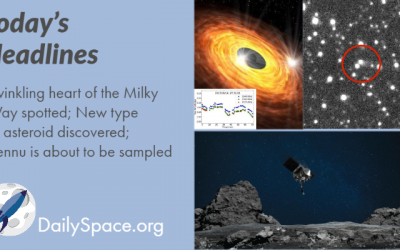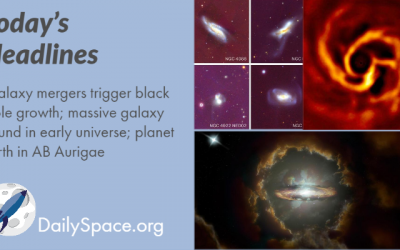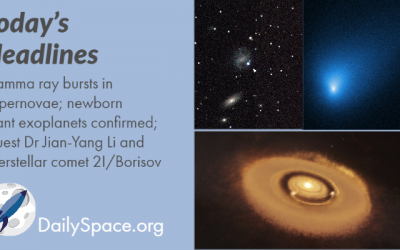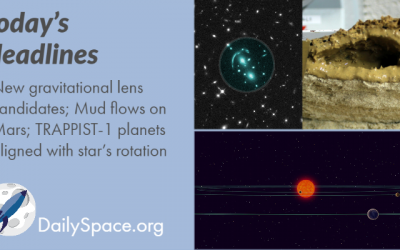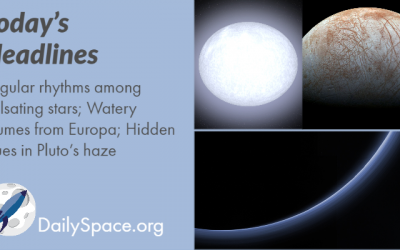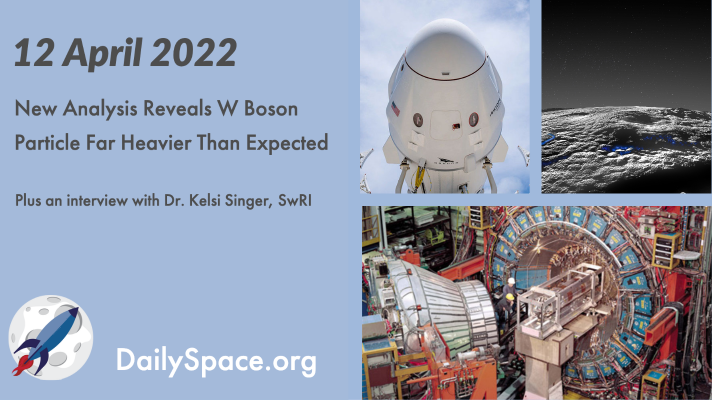
New Analysis Reveals W Boson Particle Far Heavier Than Expected
Despite being shut down a decade ago, the Collider Detector at Fermilab provided enormous amounts of data, some of which have recently been re-analyzed, leading to the discovery that the W boson is actually more massive than calculations and predictions expected. Plus, another JWST update, the newest most distant galaxy, gravitational waves, and an interview with Dr. Kelsi Singer about cryovolcanoes on Pluto.
Catch us on NowMedia TV
Saturday 11pm Central / midnight Eastern
Sunday 10pm Central / 11pm Eastern
Watch live on these stations: Houston 21.10, Atlanta 22.10
or tune-in on Apple TV, Roku, YouTube Live, or Amazon Prime
Twinkling heart of the Milky Way spotted; New type of asteroid discovered; Bennu is about to be sampled
Join us today as we talk about radio transmitters found in the twinkling heart of the Milky Way. Then we’ll look at an asteroid that has a comet-like tail. And finally, Bennu is about to be sampled by OSIRIS-Rex, and we helped make that happen!
Galaxy mergers trigger black hole growth; massive galaxy found in early universe; planet birth in AB Aurigae
Join us today as we discuss the impressive work by an undergraduate student who figured out how galaxy mergers influence the growth of supermassive black holes. We talk about a gigantic galaxy found in the early universe. And finally, we look at amazing images of a planet being formed around a distant star.
Rocket Roundup for May 20, 2020
Join us for this week’s Rocket Roundup with host Annie Wilson. We look at the rocket launches that did and did not happen this past week, including China putting two more prototype communications satellites up and testing their new crewed (but not-yet-crewed) spacecraft. Additionally, we talk about ULA launching the USAF’s Orbital Test Vehicle, aka the X-37B spaceplane.
Gamma ray bursts in hypernovae; newborn giant exoplanets confirmed; Guest Dr Jian-Yang Li and interstellar comet 2I/Borisov
Join us today when we learn about new research on how gamma ray bursts and hypernovae are related. Then we look at new adaptive optics that have proven images of protoplanets are real images of real planets. Finally, we are joined by Dr. Jian-Yang Li from the Planetary Science Institute to talk about interstellar comet 2I/Borisov.
New gravitational lens candidates; Mud flows on Mars; TRAPPIST-1 planets aligned with star’s rotation
Join us today as we talk about gravitational lensing, new candidates for lenses, and how the search for Dark Energy could progress. We also look at a mud monster that is actually a lab experiment showing how mud could flow like lava on Mars. Next, we enjoy that the TRAPPIST-1 planets are orbiting as expected. And finally, we give a quick shoutout to researchers everywhere using their equipment to help in the fight against COVID-19.


 We record most shows live, on Twitch. Follow us today to get alerts when we go live.
We record most shows live, on Twitch. Follow us today to get alerts when we go live.

